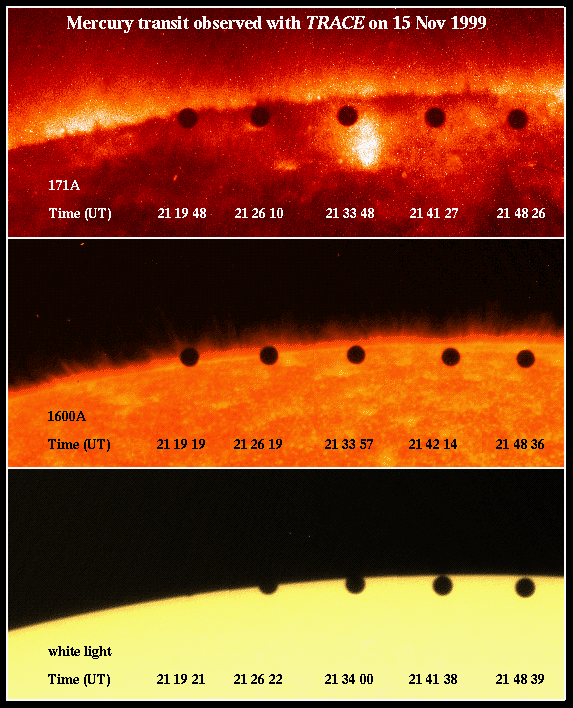
The Transition Region and Coronal Explorer (TRACE) Instrument ran images during the Mercury transit of the solar disk on 15-Nov-1999. The composite picture shows the transit of Mercury as observed with the TRACE satellite on 15 November 1999 (there are also movies). Each row is composed of five separate observations of the Sun around the position of Mercury; these are displayed side by side to form a kind of stroboscope image.

The bottom row shows Mercury passing in front of the solar disk as seen in white light, with the planet (with a radius of 2420 km, or 38% of that of the Earth) passing along the very northern edge of the disk.
The top row shows observations obtained in the 171A channel, which observes radiation from the hot (1,000,000 degrees) corona of the Sun. Notice that the edge of the Sun is quite a bit different in these images than in the white-light images. This is caused by a tenuous gaseous envelope of the Sun above its surface: this envelope transmits ordinary white light, but it blocks the extreme ultraviolet radiation from the corona. Only high above the solar surface does this envelope become tranparent enough to let even that EUV light shine trough (the difference is close to 4,000 km).
The central row shows images obtained in the ultraviolet passband centered on 1600 A. This image shows the solar disk, but also the hazy emission of the ragged and very dynamic envelope of hot gas above the surface. Notice that the limb in this picture is intermediate to that in the top and bottom rows.
There's also a movie of the transit. Click here for a simple movie, or click here for a cool Javascript engine.